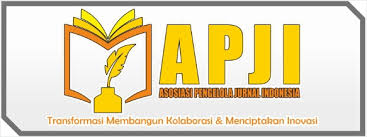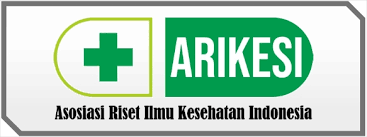Effects of Reproductive Health Education Using Video Animation Towards Reproductive Health Knowledge and Attitudes in 5th and 6th Elementary Grade Students in Serang City, Banten
Abstract
Introduction: Adolescent reproductive health education aims to increase knowledge and attitudes about reproductive health. Therefore, an easy, inexpensive, and standardized method of education is needed in the delivery of reproductive health material to young adolescents, one of them is audiovisual media animation
Method: The research was conducted using a pre-experimental research design pretest-posttest one group design within 31 days. This study used a total sample of 180 subjects, furthermore, the data were analyzed using Structural Equation Modeling (SEM).
Result: Education with reproductive health animated videos increased knowledge about reproductive health immediately after education was given (P = 0.002), but after 31 days, it did not affect (P = 0.171). Education with animated videos did not affect the subjects’ attitude immediately after education was carried out (P = 0.802) but had an effect after 31 days from the start of education (P = 0.031). After analyzing the correlation including other confounding variables (R square), it was found that the effect of education with animated videos towards the increasing knowledge of reproductive health was 14.9%, and 8.4% towards changes in subject attitudes.
Discussion: Health education with video animation increases knowledge, but the phenomenon of attitudes such as dating still occurs even the subjects’ knowledge have increased.
Conclusion: Reproductive health education using animated videos increases knowledge but does not change attitudes in reproductive health
Keywords
Full Text:
PDFReferences
Ahmadi. 2009. Psikologi Umum. rev.ed. PT Rineka Cipta. Jakarta
Ardiyanti, M., & Muti'ah, T. 2013. Hubungan Antara Pengetahuan Kesehatan Reproduksi dengan Perilaku Seksual Remaja SMA Negeri 1 Imogiri. Jurnal Spirits, Vol 3, 1-14.
Arisana, A., & Ismani. 2012. Pengaruh Kedisiplinan Siswa dan Persepsi tentang Kualitas Mengajar Guru Tehadap Prestasi Belajar Akuntasi Siswa Kelas XI IPS MAN Yogyakarta 2 Tahun Ajaran 2011/2012. Jurnal Pendidikan Akuntansi Indonesia, Vol 10, 22-42
Astri LA, Winarni S, Dharmawan Y. 2016. Pengaruh Pemberian Pendidikan Kesehatan Reproduksi Terhadap Tingkat Pengetahuan Remaja Awal Sekolah Dasar Di Daerah Wisata Bandungan, Kabupaten Semarang Tahun 2016. Jurnal Kesehatan Masyarakat. 4 (4) : 213-219
Benita NR. 2012. Pengaruh Penyuluhan Terhadap Tingkat Pengetahuan Kesehatan Reproduksi Pada Remaja Siswa SMP Kristen Gergaji. Laporan Hasil Karya Tulis Ilmiah. Program Pendidikan Sarjana Kedokteran Fakultas Kedokteran Universitas Diponegoro
Bensley RJ, Brookins-Fisher J. 2008. Metode pendidikan kesehatan masyarakat. Jakarta: EGC
BKKBN, BPS, Kementrian kesehatan, MEASURE DHS ICF International 2013. Survei Demografi dan Kesehatan Indonesia 2012. Kesehatan Reproduksi Remaja
Bolin A, Whelehan P. 2009. Human sexuality: biological, psychological, and cultural perspectives. Routledge. New York
Buzarudina F, Fitriangga A, Putri EA. 2013. Efektivitas Penyuluhan Kesehatan Reproduksi Remaja Terhadap Tingkat Pengetahuan Siswa SMAN 6 Kecamatan Pontianak Timur Tahun 2013. Naskah Publikasi. Program Studi Pendidikan Dokter Fakultas Kedokteran Universitas Tanjungpura
Catarina Y. 2011. Pengaruh pemberian pamflet persalinan terhadap tingkat pengetahuan dan tingkat kecemasan ibu hamil. Skripsi. Universitas Diponegoro. Semarang
Christie D, Viner R. 2005. ABC of adolescence. Adolescent development. BMJ (330): 301 – 304
Damayanti, R. 2000. Dasar-Dasar Psikologi. Jakarta: FKM UI.
Departemen Kesehatan Republik Indonesia. 2000. Modul pelatihan bimbingan dan penyuluhan kesehatan reproduksi remaja bagi petugas kesehatan: pegangan bagi pelatih. Depkes RI. Jakarta
Hindin MJ, Fatusi AO. 2009 Adolescent sexual and reproductive health in developing countries: an overview of trends and interventions. Int Perspect Sex Reprod Health. 35(2):58-62.
Hull TH, Hasmi E, Widyantoro N. 2005. Peer educator initiatives for adolescent reproductive health projects in Indonesia. Reprod Health Matters. 12(23):29-39.
Johariah A, Mariati T, 2018. Efektivitas Penyuluhan Kesehatan Reproduksi Remaja Dengan Pemberian Modul Terhadap Perubahan Pengetahuan Remaja. Jurnal manajemen Kesehatan Yayasan RS Dr Soetomo. 4(1)
Kardes, Frank, R. 2001. Consumer Behavior, New York: Mac Millan Publishing Company.
Kementerian Kesehatan Republik Indonesia. 2017. Profil Kesehatan Indonesia 2016. Kementerian Kesehatan R.I. Jakarta
Kusmiran E. 2011. Kesehatan reproduksi remaja dan wanita. Salemba Medika. Jakarta
Maharani SM, Riyadi A, Wardani AL, 2016. Media Penyuluhan Kesehatan Reproduksi Berbasis Animasi Dan Multimedia Pada Remaja Di Badan Kependudukan Keluarga Berencana Nasional (BKKBN). Skripsi. Program Studi Teknik Informatika Fakultas Teknik Universitas PGRI Yogyakarta
Manuaba. 1998. Memahami Kesehatan Reproduksi Wanita. EGC. Jakarta
Nurdianto, Arif Rahman. 2020. Zero Maternal Death with KECUBUNG Featured in SATE Krembung Application (Integrated Queue System) in Krembung Community Health Center from 2017 until 2018. Qanun Medika. 4 (No.1 2020), 59-67. Taken from: http://journal.um-surabaya.ac.id/index.php/qanunmedika/article/view/2746
Murre JMJ, Dros J . 2015. Replication and Analysis of Ebbinghaus’ Forgetting Curve. PLoS ONE 10(7)
Notoatmodjo S. 2013. Pendidikan dan perilaku kesehatan. PT Rineka Cipta. Jakarta
Notoatmodjo S. 2012. Promosi Kesehatan dan Ilmu Perilaku. PT Rineka Cipta. Jakarta
Poltekkes Depkes Jakarta I. 2012. Kesehatan remaja: problem dan solusinya. Salemba Medika. Jakarta
Prijatni I, Rahayu S. 2016. Kesehatan Reproduksi dan Keluarga Berencana, Modul bahan ajar cetak kebidanan. Kementrian Kesehatan Republik Indonesia
Purwanto E. 2000. Perbandingan tingkat pengetahuan kesehatan reproduksi siswa sekolah menengah umum di pedesaan dan perkotaan. Tesis. Universitas Diponegoro. Semarang
Samandari G, Speizer IS. 2010. Adolescent sexual behavior and reproductive outcomes in Central America: trends over the past two decades. Int Perspect Sex Reprod Health. 36(1):26-35.
Santhya KG, Ram U, Acharya R, Jejeebhoy SJ, Ram F, Singh A. 2010. Associations between early marriage and young women’s marital and reproductive health outcomes: evidence from India. Int Perspect Sex Reprod Health. 36(3):132-139.
Sholiha EUN, Salamah M. 2015. Structural Equation Modeling-Partial Least Square Untuk Pemodelan Derajat Kesehatan Kabupaten/Kota di Jawa Timur (Studi Kasus Data Indeks Pembangunan Kesehatan Masyarakat Jawa Timur 2013). Jurnal Sains dan Seni ITS. 4(2).
Sofyani H. 2015. Modul Praktis Partial Least Square (PLS) Untuk Penelitian Akuntansi Pendekatan Kuantitatif. Prodi Akuntansi. Universitas Muhammadiyah Yogyakarta.
Sukmaningsih W, S. Nugraheni, and A. Kartini. 2018. Pengaruh Film Pendek melalui Peer Educator terhadap Perilaku Remaja SMA terkait Kesehatan Reproduksi di Kota Semarang. Jurnal Manajemen Kesehatan Indonesia, vol. 6, no. 1, pp. 50-59, Apr. 2018. https://doi.org/10.14710/jmki.6.1.2018.50-59
Wiknjosastro H. 2007. Ilmu kebidanan. Yayasan Bina Pustaka Sarwono Prawirodihardjo. Jakarta
World Health Organization. 2011. The sexual and reproductive health of younger adolescents: research issues in developing countries: background paper for a consultation
DOI: http://dx.doi.org/10.30742/jikw.v10i2.1230
Refbacks
- There are currently no refbacks.
Copyright (c) 2021 Arif Rahman Nurdianto

This work is licensed under a Creative Commons Attribution-NonCommercial 4.0 International License.
Jurnal Ilmiah Kedokteran Wijaya Kusuma is licensed under a Creative Commons Attribution-NonCommercial 4.0 International License

Â










